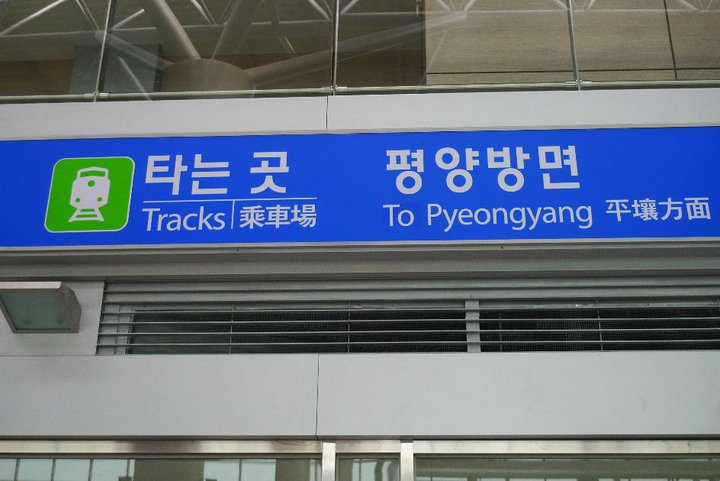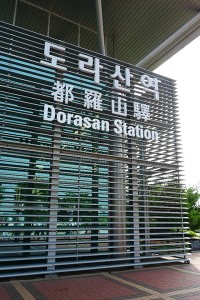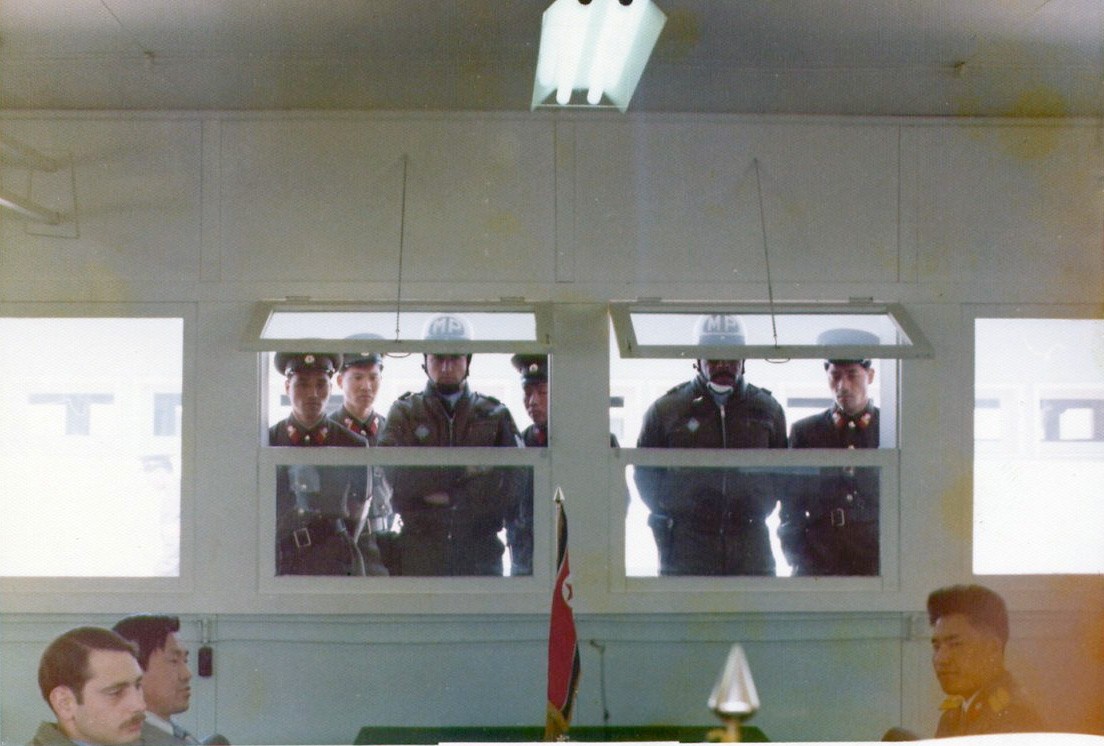
DMZ Tour, Part 2: Dorasan Station
This is the second of two entries on my trip to the Korean DMZ. Click here for the first.
Dorasan, Part 2
After going to the Dorasan Observatory we made our last stop in the Paju area. Our bus rolled down the hill to the Inter-Korean Travel and Transport Area, where the main road that links the two Koreas together sits. Cars were parked near the checkpoint and many of them likely belonged to workers of the Kaesong Industrial Complex, the only economic link between the two nations.
At Kaesong, 44,000 North Korean workers labor away each day for 121 corporations. Some 500 South Koreans also work at the complex each day. It’s an economic bump for the North, but nothing but a blip for the South. It’s a very weird deal. Forbes describes it as an attempt to expose the North to a market economy. I recommend this New York Times piece from July on the subject as well. After the Cheonan incident that has transpired over the previous four months, the North has threatened to close Kaesong if the South began piping anti-Communist radio messages across the DMZ.
The station’s complex and surrounding freight depot was only 500 meters from to the Military Demarcation Line, the de facto border to the two technically-at-war nations. This was the closest I have been to the North.
The buses stopped in front of the very pristine-looking Dorasan Station. It even looked like a regular metro or Korail stop seen around Korea. However, when I walked into the station, something didn’t feel right. It was empty, clean and looked unused. I figured maybe it was a commuter stop for those working at Kaesong, but it actually served another purpose.
Under closer inspection of a sign near a turnstile, it read: “Tracks to Pyeongyang.”
What? Do the trains actually go to the North? This looks like a normal station, I thought, it even had the poster for the Korean musical version of “Jack the Ripper” I had seen at the KTX station in Busan. After asking my friend Bruce, an English teacher at my school, about Dorasan, he told me that this station was actually a symbol of unity.
Dorasan Station isn’t actually a working, I learned. It was built in 2001 as a representation of the South’s dream of normalizing relations with the North. The imaginary train line would ultimately end South Korea’s geopolitical situation as an island by connecting to Eurasia as a whole.
A map that showed the hope that some day a train could leave from Seoul Station, go to Pyongyang 300 kilometers away then go to Vladivostok, Russia and connect to the Trans-Siberian Railway.
A sign inside the station showing train tracks going into the horizon read, “This is not the last stop of the South, but the first stop toward the North.” This is South Korea’s Propaganda Village.
After doing some wandering, I came to closed glass doors where a customs checkpoint sat. There were metal detectors, x-ray scanners and a passport check. It was dark and had never been used. It was quite eerie. I later learned that on some days, visitors could go on the tracks and even take a short ride between Dorasan and Imjingang (a normally serviced stop) for 1,000 won.
Dorasan was as creepy as it was fascinating. It felt as if I was on a set at the Universal backlot, a complete facade. I understood the purpose of the station, but it just didn’t feel right. The lighted board showed fake train schedules between Dorasan and Kaesong for “commuters.” It had had all the elements of a normal station, but it wasn’t.
While the station has never been officially used for trans-Korean travelers, freight trains have used the tracks connected to the nearby depot. From late 2007 through Nov. 2008, Dorasan Station was used to ship materials to the plants at Kaesong. According to the AFP, this shipping method was seldom used, but Seoul insisted on continuing it as symbolic gesture. When ties worsened after the closure of Mount Kumang Tourist Zone in 2008 the freight shipments stopped.
Looking at around the station, I finally understood why whenever a map or outline of Korea was drawn, painted, put on a sign or TV screen, it included the entire peninsula and not just the South. To South Korean people, the peninsula is one people, one language and one culture. Not two nation-states divided on a map, but a group of brothers and sisters separated.
After Dorasan Station, our bus left the restricted zone and headed to the Gyeonggi English Village (an all-immersive English-language “theme” park). The tour of the DMZ was something I’ve always wanted to do in Korea. So in the end, I’m very happy with the trip and the things I got to see.
I found the trip very interesting and informative. It also gave me a look into the history of a country that considers itself divided.
Other DMZ Sites
Originally, I wanted to take the USO tour of the DMZ. The USO tour included several more stops than the one I took. Those were US Army Camp Bonifas, the Joint Security Area and the Bridge of No Return. All three of those are in the village of Panmunjeom. Given certain UN laws, it would be impossible to do those stops with Korean civilians. I guess they are afraid of provocations or defections.
The JSA is probably the most well known site of the DMZ. It is a circular 800-meter zone where many of the talks have taken place between the two Koreas, and where the cease-fire was signed in 1953. Soldiers from the South and North (and US) all patrol this area. Visitors usually have a chance to walk on North Korean soil (with an armed US Army guide.)

Due to several past firefights and incidents, Korean civilians are not allowed to go to the JSA. Even then, according to Wikitravel (which may be out of date as of now), JSA tours have been suspended in light of the current tension after the sinking of the Cheonan. So even if I wanted to, I could not have gone.
I guess I’ll have to wait a while longer before I can check it out. Or maybe see it from the other side if things get better some day…
UPDATE: I recently traveled to the Joint Security Area. Click here for DMZ Tour, Part 3: Joint Security Area





Where did you get the bottom photograph–the one mentioning 1LT Zilka and SSG Richardson?
I got it from Wikipedia.